Leadbelly, Robert Johnson, Charley Patton — we are all familiar with the story of the Delta blues. Fierce, raw voices; tormented drifters; deals with the devil at the crossroads at midnight.
In an extraordinary reconstruction of the origins of the Delta blues, historian Marybeth Hamilton demonstrates that the story as we know it is largely a myth. The idea of something called Delta blues only emerged in the mid-twentieth century, the culmination of a longstanding white fascination with the exotic mysteries of black music.
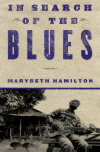 The prehistory begins around 1900, when a group of obsessive white men and women set out to track down those voices. For the would-be race scientist Howard Odum, this meant combing remote Mississippi’s back roads with a cylinder phonograph to capture the obscene melodies of vagrants and field hands. For the plantation-bred folklorist Dorothy Scarborough, it meant finding elderly white Civil War veterans to recreate the croonings of mammies and nursemaids. For the Texas banker turned song hunter John Lomax and his teenage son Alan, it meant prowling Southern penitentiaries and unearthing a double murderer, Leadbelly, whose rough, ragged, melancholy vocals evoked the anguish of the chain gang.
The prehistory begins around 1900, when a group of obsessive white men and women set out to track down those voices. For the would-be race scientist Howard Odum, this meant combing remote Mississippi’s back roads with a cylinder phonograph to capture the obscene melodies of vagrants and field hands. For the plantation-bred folklorist Dorothy Scarborough, it meant finding elderly white Civil War veterans to recreate the croonings of mammies and nursemaids. For the Texas banker turned song hunter John Lomax and his teenage son Alan, it meant prowling Southern penitentiaries and unearthing a double murderer, Leadbelly, whose rough, ragged, melancholy vocals evoked the anguish of the chain gang.
Many of these early recordings turned up in a single room of a Brooklyn YMCA, in the hands of a reclusive collector names James McKune. McKune had heard something pure and primal in the voices of Charley Patton and Robert Johnson, the prized items in the collection of scratched, battered 78s that he stored in a cardboard box under his bed. When the secret stash of recordings came to light in the 1960’s, collectors used them to invent the idea of the Delta blues — the “authentic” voice of black America, so unlike the impure popular black music of the time which emanated from corporate record labels.
In In Search of the Blues, Hamilton makes the case for how the Delta blues was created not by blacks but by white pilgrims, seekers, and propagandists who headed deep into America’s south in search of an authentic black voice of rage and redemption. In excavating the history of an immensely popular musical form, Hamilton reveals the extent to which American culture has been shaped by white fantasies of racial difference.#
Hamilton participates in a May 23, 2008 conversation about her book with Jerry Jazz Musician contributor Paul Hallaman.
_________
Roots RL-303
“…Mine is not a conventional blues history. I make no attempt to cover the ground mapped in Robert Palmer’s canonical Deep Blues, with its focus on the development of a musical style and lines of artistic transmission (Charley Patton begets Son House begets Robert Johnson begets Muddy Waters). In such a history, quite rightly, the protagonists are black. My central characters are white. All of them set out to find an undiluted and primal black music. Behind that obsession lay an emotional attachment to racial difference that extends back at least to the mid-nineteenth century, to abolistionists’ enchantment with the peculiar power of black singers, their uncanny ability to allow their white listeners to experience an unimagined transcendence, a level of emotional intensity otherwise out of their reach.
“The folklorists, critics, and collectors I’ve written about were all searching for that vicarious ecstasy. All were born in the era of segregation; in different ways, all felt imaginatively tied to the South. Throughout their lives, they made racial assumptions that were hackneyed, condescending, and often offensive. Yet as I read their words, tracked their obsessions, and revisited their journeys, I came to appreciate what they have left us, the reservoir of recovered music, the chain of knowledge and expertise. In time, I learned to admire the sheer fortitude it took to engage with an art form that few whites of their generation respected. Even as they feared black modernity, they struggled to cope with it and sometimes transcend their racist beginnings.”
– Marybeth Hamilton
____________________
PH Your book is a story about a few men and women in search of spellbinding voices and a yearning for real black music, but you actually began this as a book about Little Richard .
MBH Yes, that is what I thought I was doing. I was interested in Little Richard as a kind of offshoot of an earlier book I wrote about Mae West, where I had put a lot of research into the roots of her performance style and underground performance traditions. She had also written a play set in Harlem that featured an interracial romance between a white prostitute and a black boxer, and when I was researching the context of her writing the play and on Harlem during the 1920’s and 1930’s, I was struck by the elaborate extent that the African-American — and to some extent the gay white community — was visibly and formatively present there. I had always been a Little Richard fan, and I have been interested in his roots as a performer, how he ran away from home at age 13 and joined a minstrel show as a female impersonator, and how he portrayed a very openly gay, very camp female impersonator. I was struck by how there seemed to be a role for that within the rhythm and blues circuit. In the process of researching him, I learned that wherever he toured during the early 1950’s, he would introduce himself as “Little Richard, King of the Blues — and the Queen Too!” That phrase stuck with me, and I wanted to understand how it was that Little Richard would categorize himself as a blues performer, yet no historians of the blues included him in their cast of characters. This got me thinking about categories that did and didn’t count as authentic blues, where they had come from, who decided which blues artists were “in” and which were “out,” and where to draw the lines. Through this circuitous route, I was taken to the folklorists and record collectors I eventually wrote about.
PH Were you a blues fan when you began writing the book?
MBH I didn’t start the project out as a blues fan. I was more of a blues skeptic than anything else. Through the reading of Greil Marcus’s book Mystery Train, I had been initially introduced to the name and idea of Robert Johnson long before I ever heard him. There was something amazing about the rhapsodic edge of Marcus’s description of Robert Johnson, of the existential anguish that simmered through his music, and of this figure who absolutely towered over rock and roll and rhythm and blues music. I found some of Marcus’s description to be a little off-putting, so it took me until 1990 to get around to listening to Johnson’s music, when The Complete Recordings of Robert Johnson was released on compact disc. At that point I was bewildered because I didn’t hear this great existential drama in his music everyone else seemed to — instead, I heard a sound of scratchy vinyl transferred to CD, and a voice percolating up from beneath it. I didn’t hear the great, transformative experience that I thought I was supposed to hear, so I became interested in where the kind of resonance that Marcus and others were attributing to Johnson had come from. Not that they were mistaken in hearing that, but it seemed to me that more was going on than just a response to music, that there was a reverence for the Delta blues that was about more than just what people heard on recordings. That quest to find and to celebrate authentic black voices took me back to the beginning of the recording industry, or at least to the beginning of the commercial recordings of African American music in the 1920’s.
PH Let’s start with Howard Odum, who, as a social scientist, set out down the trail with his gramophone to study the “social and mental traits of the Negro,” and to find early songs. He was certainly an interesting figure .
MBH Yes, Odum is an interesting figure because he became a liberal on racial matters — at least in southern terms — by being a gingerly-stated opponent to segregation. While he worked for abolition privately, he was never willing to put himself on the line in public.
He was born into a poor Georgia family but was set alit by social science as a young man. He went to the University of Mississippi, where he became inspired by his professor, Thomas Bailey, to make an empirical study of folk songs. Though he never said it directly, a big event prompting this was the 1903 publication of African American scholar and activist W.E.B. Du Bois’ The Soul of Black Folks, which was a very eloquent and impassioned argument for racial justice. Among the things Du Bois argues is that spirituals — the sorrow songs of the slaves — are extraordinary documents of suffering and pain, as well as extraordinary political documents of protest against victimization. But he also argues that they are works of art — the most eloquent and moving folk songs ever produced on American soil — therefore, how could white America justify denying equal rights to the people who produced these songs? We know that Odum read this book because he quotes from it in his writings of 1910. He doesn’t exactly say who he is quoting, but he is quoting Du Bois. Clearly it was too threatening for him to cite it directly, but he read it and was very troubled by it.
PH This prompted him to record the songs …
MBH Yes, because he wanted to get empirical documentary evidence of what black people were actually singing. He was convinced that they were not singing spirituals — spirituals are beautiful artifacts of days gone by. Like so many other Southerners of his time, he believed that black people had deteriorated since the days of slavery, and had regressed to a kind of animal fate. So, he wanted to get objective data — much in the same way that physical anthropologists of the time were measuring heads with calipers as a way of getting objective data to show that black people were of lesser intelligence — and the way to get this data was with his recording machine. His intent was to show that black people were socially, mentally and morally inferior. So, in 1908, Odum took his recording device into the hills surrounding Oxford, Mississippi, and paid itinerant singers small change to sing into his recording machine.
In the process, several things happened, the first of which being that he was absolutely horrified by what he heard. I don’t think he was necessarily prepared for the experience of actually meeting black people face-to-face — of going into their homes and watching them perform — and he found what they sang to be completely repellent. Odum was a very upright, religious, Victorian young man, and at almost every level was completely horrified by what he heard, especially by the sexual suggestions in the music. However, at the same time, a part of him was actually compelled by it — he was too intelligent not to notice that there was a kind of artfulness in what he heard, and he became drawn into the recordings. Twenty years later, he realized that the very same songs he recorded in 1908 were now being sold commercially to a black audience on what were called “race records,” leading him to the understanding that he had actually recorded the blues long before the recording industry had. However, there is no way to hear what he recorded because he didn’t preserve the cylinders. In those days, social scientists couldn’t imagine why anyone would want to listen to the recordings later, so they scraped the recordings off the cylinders once they were transcribed.
PH So, Odum heard the blues before the commercial recording industry did …
MBH Yes, and we do get some kind of sense from him about what was being performed. What is also interesting is that we get the sense of just how powerful an instrument the recording machine would be. Odum was unsettled by the fact that these itinerant musicians he was recording were not in the least bit intimidated by this strange experience of standing in front of a machine and singing. They knew absolutely what this machine was for. Odum’s perspective was that it was a scientific instrument that would provide him his data, but from their perspective it was a tool to broadcast their voices to the world. Prior to recording a song, he said that one young man told him, “I need to say that because this song is going to be heard all the way around the world, I want to get credit for it.” So, they actually had a much more visionary sense of what this technology was capable of doing than Odum did, which in itself frightened him because it showed him that black people would no longer be merely a rural, pastoral folk — they were excited by all the possibilities of modernity.
PH Yes, and accuracy getting in the way of folklore is an issue for the documentarians When Odum returned to the subject in the mid 1920’s, he had already made the definition of “real folk blues” as opposed to what he calls “formal blues” on race records, and he wrote a book, Rainbow Round My Shoulder, which was a life history of Left Wing Gordon .
MBH That is an extraordinary story. Prompted by things that are going on in his own life, as well as the groundswell of white interest in African American culture — particularly in the northern cities that accompanied the “New Negro Movement” — he wrote this book, which turned out to be very successful. He went back to his materials from 1908 Mississippi and initially wrote two non-fiction books, The Negro and His Songs, and Negro Workaday Songs, in which he chronicles and makes sociological commentary on the songs he had been hearing. In the process of his researching and gathering new materials for Negro Workaday Songs, he claims to have stumbled upon a black construction worker singing on a construction site who he was completely entranced by. He returned the next day with a bottle of whisky and got this man to talk about his life, writing down everything he said. From this he wrote a book telling Left Wing Gordon’s life story, framing the book as a kind of black version of the Homeric hero, a wanderer expressing the spirit of his people and of his age. However, since Odum dictated the entire book to his secretary while standing in his office with his eyes closed, reciting the voices and singing the songs he remembered the workers singing to him, Gordon’s life story reads like fiction — and probably is fiction, really, although there are voices that you can identify from Odum’s field notes in it. But the really interesting thing about all of this is that the very same music Odum had described 20 years earlier as vicious and obscene was now being described as “folk-blues,” something that was haunting and endangered.
PH What was endangering it?
MBH Commercial race records. So, he was now looking back on these songs he collected as precious artifacts that the white commercial culture had seized upon, and felt that this was endangering something that was vital, and a force for a kind of social regeneration that we couldn’t afford to lose.
PH The revisionist thinking of, “Well, on second thought, these songs aren’t so bad after all,” comes up frequently in your book .
MBH That’s right.
PH Another folklorist you write about, Dorothy Scarborough, published a memoir, From a Southern Porch, which was a celebration of the old South .
MBH Scarborough was a fascinating figure. I wanted to tell her story because it was so representative of the many women who collected African American folklore during the late 19th and early 20th Centuries. Almost all of them were southerners, and virtually all of them were trying to resurrect and preserve what was called at the time the “Field time Negro,” the docile, missive, contented, amiable, “Mammy” or “Uncle” that they had or pretended to have had. These plantation memories, either real or imagined, were a way to elevate oneself in the southern social scene of this era.
Scarborough did, in fact, have a plantation background. She grew up in Texas, the daughter of a judge, and was a very intelligent, well-read young woman with ideas and ambitions that were virtually impossible for a woman living in the South to satisfy. So, she got out of the South as quickly as she could, leaving for Columbia University in New York, where she got her Ph.D. and a job teaching creative writing. She became a New Yorker, and almost immediately after became an avid professional southerner, full of memories of her youth, which she wrote about in her 1919 book From a Southern Porch. She then wrote a series of novels, all within a southern plantation setting.
In 1920, Scarborough was living in Morningside Heights, on the fringe of Harlem, when the first blues recording by an African American singer, Mamie Smith’s “Crazy Blues,” was released. It was a huge commercial success, even though it was marketed exclusively in the African American neighborhoods. Scarborough almost certainly knew of this success, because as this song and other race records began to be a force to be reckoned with on the cultural scene, she started a project to collect what she described as “genuine Negro melodies.” She took a few sabbaticals from Columbia and traveled throughout the South to collect these songs. But what was most fascinating about her was that on her journeys to the South she very rarely collected songs from “genuine Negroes.” Instead, she collected them from elderly white people like Dr. John Wyeth. He was a surgeon, had served in the Civil War, and had written a memoir called Some Favorite Scalpels about his time on the battlefields and in the operating room. He was a very elderly, very imminent man .
PH He was a prisoner of war as well, right?
MBH Yes, he was a prisoner of war and wrote some very high profile articles about the ill treatment that southern prisoners received in northern prisons, which was considered to be scandalous as it made its way into the halls of Congress. So, he told her about the songs he remembered from his childhood, and also told her the story that many southerners of his generation would tell — about the good old days on the plantation when black people “knew their place,” and when there was a sort of “family feeling” among blacks and whites, and where as a young boy he would steal away to the servant’s quarters, where his beloved servant Uncle Billy taught him how to play the banjo. He talked about how those days are gone, and how the fellowship feeling between the races was gone, and how blacks who went to the city had lost their manners, their sense of generosity and kindness and openness of spirit that had characterized the relationship between the races before. W.E.B. Du Bois called this a great plantation fairy-tale — a vision that infused the writings of southern history, including in Gone With the Wind, a gracious world where blacks and whites lived together in a kind of familial harmony until the northern troops marched in and everything changed. So that was the story he told her, and then, extraordinarily, he got up and danced for her, reenacting these songs and dances he remembered learning as a boy.
What interested me so much about this is that it wasn’t just some bizarre spectacle being carried out by Scarborough. It was Howard Odum going to black people and asking them to sing into his recording device who was the exception during this period of time. Scarborough had a recording machine as well, but she didn’t record black people with it — and that was true, by and large, of folklorists of that time. Folklorists wanted “genuine Negro songs,” and you didn’t go to “genuine Negroes” to get those, because they were listening to race records, which is not what the folklorists wanted. So, they got their material from elderly white southerners instead.
PH Yes, from the “white informant.” She wasn’t likely to go to any of her neighbors in Harlem to ask if they could provide an answer to a question like, “Can you remember any of the songs your grandmother might have been singing while she was doing the wash?” They would have slammed the door in her face .
MBH Absolutely, but what is interesting about Scarborough is that she does eventually have to bump against those neighbors in Harlem, because, as a highly regarded writer and teacher of creative writing at Columbia, she was asked to judge a short story contest held by the African American journal Opportunity. While judging these stories written by African American writers, she was also writing her own book, On the Trail of Negro Folk-Songs, which made her come to terms with the fact that there was a new generation of young, urban, black intellectuals who were outspoken about the fact that this was their culture, and they would be the ones with the authority to say what constitutes real folk music and what doesn’t. This seems to influence the way she ends up writing On the Trail of Negro Folk-Songs, because there is a hesitancy about her authority that comes through in the book. Also, when the book first came out she said it would be the first in a series of books, and that she would write lots of books about Negro folk songs. In fact, she never wrote about the subject again — she actually stopped collecting that material altogether. The next book she wrote was published posthumously and was a book on the folk songs of white Appalachians, written as a compassionate social investigator who was making a critique of the poverty of these people’s lives.
Scarborough never let social criticism infiltrate her writing about black music — she really doesn’t have a language for doing that. But in the very final stage of her writing Negro Folk Songs, she visited W.C. Handy in his New York office and asked him where the blues came from, which was the most interesting story of all. She wrote about this in a very neutral, almost repressed way, very clearly not saying all that she felt. She records what he said about the origins of the blues without much comment, almost as if she didn’t really know what to do with his opinion on the music — that it is a music coming out of a specifically black experience, and that only black people can really understand its origins.
While she doesn’t comment on that at all in her book, her draft manuscript makes it clear that she was actually quite taken aback by the experience of meeting Handy. His office was smoke-filled, and filled with professional entertainers — black and white, male and female — and nobody paid any attention to her. She was told by his secretary in a very non-committal way that he was very busy and probably wouldn’t have time to see her. So, what really seemed to be at the heart of what was so troubling to her was being rebuffed by this black entrepreneur, and confronting this new world of African American music and culture she was trying to come to terms with, but ultimately could not. It was so different from the imagined world of the genteel family relationships she depicted from her southern past.
PH One can only imagine what the Times Square offices of W.C. Handy would have been like. I am sure it was quite a scene — and here is this white, genteel, southern woman sitting in the middle of it, probably not knowing what was going on. It had to be completely out of her element, but that wasn’t something she was willing to admit, except to herself .
MBH That’s right.
PH John Lomax and his son Alan are much more prominent in the history of American folklore, but John comes into this with an agenda. It was thought at the time that there was no music indigenous to America, and he seeks to prove that wrong .
MBH He is a fascinating character — not a particularly complicated character, but an easily caricatured character in ways that he left himself completely open to. He became interested in folk songs at a very early point, 1910, and had seemingly been interested in Negro folksongs at around that same time too. He got married, worked in a bank, and had a family of four children, of whom Alan was the third. He wrote about music in a sustained way in 1933, in the wake of his wife’s death and the Great Depression, when he lost his job at the bank. In the midst of all of this, and in complete defiance of all practically — as a single father with no income — he decided to write a book about folk song. He managed to get a contract for a big book about American folk song, and also persuaded the Library of Congress to give him a big, purpose-built recording machine that could make high quality recordings on the spot, which then allowed him to play them back to the people who sang to him.
John Lomax thought that there was indigenous American folk music, and believed it resided with what he called “the down and out” classes — the sailor, the miner, and the Negro convict. The most immediate reason for his emphasis on the Negro convict was because he was after what he called “uncontaminated Negro songs” — songs sung by singers who were untouched by the phonograph and what he called “modern Negro jazz.” The most reliable method he could think of to define these “uncontaminated” songs was to go to racially segregated penitentiaries where he could find people who had been away from the force of the modern world for 10 or 15 years — and even if someone had been confined for only five years, he held a theory that a black man in confinement reverts to the ways of his forefathers and sings songs he knew as a child. From this, he felt prisons were a place to get this kind of pure, uncontaminated material.
PH In isolation …
MBH Yes, in isolation. So, he and his 17-year-old son Alan — who had just been bounced out of Harvard for getting involved in a Communist Party demonstration — set out in his Ford across the South. Politics was a great bone-of-contention between them because John was a right-wing reactionary politically who was absolutely horrified by his son’s flirtation with communism, and this percolated through their relationship until the end of John’s life. But they had this kind of transformative experience of roughing it together, driving down rutted, empty roads into completely isolated areas where these penitentiaries were located, recording what both of them felt to be extraordinary songs.
At one of the prisons they visit — Angola State Penitentiary in Louisiana — they were about to give up since Angola did not allow prisoners to sing while they worked, but they end up meeting a prisoner who had special status because he was such a good entertainer. He was Huddie Ledbetter, or “Leadbelly” as he was called by the other prisoners, and on the very last day of the Lomax’s stay, Leadbelly sang for their recording machine. They were completely overwhelmed because they hear this person who seemed to be a walking jukebox, and who could sing everything he ever heard. They made a dozen recordings of different numbers with Leadbelly singing, and then leave. A year later they came back to record him again, at which time Leadbelly records a plea to the governor of Louisiana, asking to be let out of prison. John Lomax takes it to the governor’s office and got him let out of prison. Now it looked as if Leadbelly would have been let out without this recording, on a good behavior clause, but Leadbelly claims to believe that it was Lomax taking that record who saved him. After he was let out of prison in 1934, Leadbelly turns up on Lomax’s doorstep a month later, when they set off on an extraordinary excursion across America.
PH The story of Leadbelly is remarkable The idea that he makes a recording that is so great that it won his freedom! What better publicity could there be than that?
MBH Exactly. John Lomax initially found Leadbelly to be the most wonderful kind of “demonstration tool” to use on this continuing recording trek through southern penitentiaries. Even though Leadbelly was now a free man, when they went to these prisons, while John and Alan slept with the prison warden in comfortable accommodations outside the cell blocks, Leadbelly was in a cell with the convicts. It was completely bizarre. But Leadbelly sung to the inmates, showing them the kind of songs John Lomax was after. The convicts then got the idea that if singing these songs got this guy out of prison, then maybe it would get me out too. So, he literally had a captive audience who could give him what he wanted.
PH Lomax felt Leadbelly was uncorrupted by the radio …
MBH Yes. John Lomax was an interesting man, partly because he was a very smart man, but also because he wasn’t very self-reflective. He had this extraordinary singer who, as you say, Lomax believed was absolutely uncorrupted by the radio and untouched by the phonograph, but that subsequently was clearly not the fact. Leadbelly had listened to the phonograph, and loved listening to the radio — in fact, he learned songs off phonograph records, but Lomax didn’t know that. So he thought he has the uncorrupted black singer right there at his fingertips, and part of him was absolutely desperate to show him off. When he was invited to bring him to New York City to showcase him for, of all things, the Modern Language Association, a convention of English professors, Leadbelly proved to be a tremendous sensation. When word of this got out, Leadbelly was being invited to perform on the radio, he was being written about in national magazines, and he was being made the subject of a newsreel made by the March of Dimes. It was an absolute media frenzy, and Lomax became terrified that Leadbelly would be corrupted by exposure to the “wicked North,” and by exposure to Harlem’s city-fied black people. Lomax was so terrified of Leadbelly being spoiled by contact with the North that he whisks him out of New York City and hides him away in a house in Connecticut. Outside the confines of this house, Leadbelly was being trumpeted in the press as the greatest Negro singer in America, but in the confines of the house, he is cooking the meals, making the beds, and driving Lomax hither and yon. So, not surprisingly, Leadbelly got pretty fed up with this, and over a period of about six or eight weeks, their relationship grew more and more hostile, until, according to Lomax, Leadbelly pulled a knife on him. Lomax subsequently sent he and his wife Martha back to Louisiana.
But the story really doesn’t end there, because Leadbelly made a comeback and became an icon of the American left, partly through the continuing relationship he had with Alan Lomax. This became the most interesting part of the story, because Lomax was unearthing the voices of these African American convicts at the time of the Great Depression, the moment when the Communist Party had significant mainstream influence on American political and social life. It was also a time when the left is actively involving itself in black politics — in particular in the case of the Scottsboro boys, seven black youths accused of raping two white women in Alabama, which eventually became an internationally famous trial. So, the eyes of the world were on the Scottsboro boys at the same time that John Lomax was recording the voices of black prisoners. This became a highly politicized subject, in a way, but John Lomax never realized this. Alan Lomax, meanwhile, was becoming involved in the ideas of the left, and had a very different sense of what documenting black convicts meant. While John saw it as a way to uncover uncontaminated voices from the margins, Alan saw their music as songs of struggle and resistance. That is what he was out to capture, and that is what he increasingly saw and heard in the music of Leadbelly. As their differences became more pronounced, Leadbelly became an emblem that exposed the divide between them.
PH Yes, John had no use for the people that Leadbelly began associating with, and in fact was cast in the light of the “exploiter,” who was seen as a man who collected the money that Leadbelly earned during his performances in the South. The other side of the story is that if John Lomax had not helped him, Leadbelly may have never got out of jail .
MBH While John Lomax had reactionary views about race, he also had a completely visionary sense that the music coming out of these singers from the South was something that constituted an indigenous American art form. He also knew the importance of saving recordings so they would still be playable 50 years in the future, which was quite visionary for the time. His reverence for technology, and his zeal to make recording machines do things that they hadn’t done before was a big part of his vision.
PH His understanding of the importance of making recordings — and saving them — is an important legacy. He was the pioneer, and we have certainly come a long way from the 300 pound recording studio he kept in the back of his Ford to the shirt-pocket recording devices used today…
MBH Yes we have.
PH I would like to talk about the importance of certain record collectors, among them a trio of men — Frederic Ramsey, Charles Edward Smith and William Russell — who you describe as being a group responsible for sparking a huge revival of interest in the jazz of New Orleans .
MBH When I first began pulling the book together, one of the things I found interesting was how, at the outset, people like Scarborough and John Lomax had a very enthusiastic sense about what recording machines could do, but who were also absolutely adamant about the belief that anything that was recorded commercially could not be folk music. So, while they went out with their recording machines looking for living singers, they were actually looking for black voices. I wanted to understand how the trading of old records began, and how for some of the traders, the story of their scavenging through Salvation Army record bins and record stores was really the story about their search for authentic black singers. How it became possible to hear authentic black voices within mass market recordings that had been tossed aside interested me a great deal. These recordings were recycled rubbish, really, being put to new uses.
That story really started with the rediscovery of New Orleans jazz. The three collectors you mention — Russell, Ramsey and Smith — began listening to old Hot Jazz recordings, particularly those made by Jelly Roll Morton during the late 1920’s. These men were middle class whites — even approaching elite status. Ramsey was a student at Princeton, Russell was a classical violinist, and Smith worked on radio. Scavenging for records meant going to Harlem, it meant going to the South side of Chicago, and it may have meant knocking on people’s doors in these neighborhoods, asking people if they had old records to sell — Russell was doing that in the late 1930’s in Chicago and St. Louis. It meant they had to be like bloodhounds on the trail for recordings that black people themselves were no longer interested in — and in some cases had never been interested in to begin with — but which they were hearing as the sound of history and the sound of an authentic, pure voice of black music that wasn’t being heard on juke boxes or on the radio.
That led to a number of things, one of which was the discovery in 1938 that one of their heroes, Jelly Roll Morton, had been abandoned by history. At the time, he was tending bar in a seedy dive in Washington D.C. called The Jungle Inn, and this group of record collectors alerted Alan Lomax, who by then was working for the Library of Congress. Lomax subsequently recorded an absolutely extraordinary interview over a period of three or four weeks, in which Jelly Roll Morton told his version of the history of jazz in the brothels and dives of New Orleans. After these interviews were completed, the trio of Ramsey, Russell and Smith decided to write their own book which would get to the heart of the story of where jazz and the blues had begun. So, they set about interviewing old jazz musicians in and around New Orleans, and the publication in 1939 of their book Jazzmen initiated a new wave of interest in old, authentic, New Orleans music. There were many things that interested me about that, the most central of which was the development of this network of record collecting in the late 1930’s and 1940’s that was mostly made up of men living in places like New York or Chicago, and who had the time and money to put into hunting for old recordings. By the early 1940’s, specialist magazines began to appear. Record Changer, for example, was completely devoted to publishing the “want lists” of record collectors. It was an extremely convoluted network of exchange in which groups of friends and cultists would develop particular passions for certain kinds of old recordings, eventually giving rise in the 1950’s and 1960’s to an interest called “country blues.”
PH While reading this segment of your book, I was reminded of a word one of the record store clerks in Nick Hornby’s High Fidelity used to describe a particular record collector — an “obscurantist.” Having worked in a record store for many years, I would argue, as you do, that there is a cultism around the “want list” of a collector that is almost other-worldly.
MBH That is a fantastic word because it captures this cultism exactly. There is a kind of connoisseur sensibility, that almost by definition the stuff that sold well commercially could not be any good, whereas the stuff that was inaccessible, that didn’t sell well and that is now hard to find is the music that is actually most desirable.
The cult of and luster for country blues among these record collectors came about because not only were recordings by Charley Patton, Son House, Skip James and Robert Johnson not successfully sold to African Americans, but other record collectors were not interested in them either. There were so many collectors of New Orleans jazz that not only did the recordings became too expensive to collect, they also didn’t want them — they wanted to find something that required more energy to uncover, and more energy to actually appreciate. Anyone who has ever listened to Charley Patton knows that you have to learn how to listen to him, you have to really struggle — it is a work of archeology, really, to make out what he is saying. It is powerful, and I don’t want to deny its power, but you have to learn how to hear that power, and African Americans, when these records came out, didn’t necessarily hear that.
PH Until James McKune and this small group of collectors, no one was looking for 78’s by the likes of Bullett Williams or Ramblin’ Thomas McKune was always looking for what record collectors I have dealt with in my own life experiences refer to as the “realstuff.” McKune’s is a great story …
MBH Yes, and his story is really at the heart of the book. He was quite a mysterious figure in a lot of ways — even to the other record collectors who knew him and who were in many ways his disciples. He was born sometime between 1910 and 1915 and moved to New York in the late 1930’s. He moved into a single room at the Williamsburg YMCA and had a job on the Long Island desk of the New York Times as a copy editor. Although he wasn’t openly homosexual, his friends believed he was. He began drinking at some point but couldn’t tolerate alcohol, which sent his life into a downward spiral, and, after living for 25 years at the YMCA, he ended up on the streets in the mid-1960’s. He was eventually murdered in a sex attack by someone he had picked up while living in a welfare hotel in 1971.
Sometime in the early 1940’s he began collecting blues recordings by singers that no other collectors were after. In 1944, after he heard Charley Patton for the first time, he became absolutely transfixed by him and began collecting Patton and singers who sounded like Patton. In the process, he developed this very rarefied sense of exactly what constitutes a great blues singer. He advertised for recordings he wanted in the back pages of Record Changer, and, in the process, met other collectors who were disaffected by the whole cult of New Orleans jazz, and who noticed the singularity of what he was after. They wrote one another and would meet at record stores like Indian Joes on Times Square. McKune became a mentor to a group of slightly younger collectors around New York who, by the 1950’s, called themselves the “Blues Mafia.” They were absolutely fixated on finding recordings that sounded like Charley Patton.
You have to cast your mind back to the days before any of this stuff was available on LP, when no liner notes existed to explain who any of these singers were — and these were singers who, in some cases, made only a few recordings that had absolutely disappeared. Since the collectors knew nothing about them, much of their time was spent listening to the voices and evaluating them on their artistic merit, but also imagining what somebody named Furry Lewis might have looked like. So, they spun these mythologies around these singers and their voices.
McKune became a mover and shaker behind what would become the blues revival of the 1960’s. In 1961, his friend Pete Whelan decided to set up a label called “The Origins Jazz Library,” which was partly prompted in response to the publication of a book called The Country Blues by the record collector and writer Samuel Charters. The book got a fair amount of attention, which the Blues Mafia were incensed by since they felt that Charters got the singers all wrong. While he wrote a short chapter about Robert Johnson, he was the only real country blues singer Charters included. He didn’t mention Charley Patton, and he didn’t mention who the Blues Mafia believed to be all the right people. So, they decided to put together a record label that would reissue all their old 78’s. They scavenged around for the best, least scratchy copies of their 78’s, they got an engineer to transfer the recordings on to tape, and they put together albums with titles like The Mississippi Blues, and Really! The Country Blues, which was a direct slap at Charters, suggesting that, unlike his book, their recordings were going to have the real thing. Those albums were incredibly influential — they are the recordings that exposed Greil Marcus to the country blues.
PH The blues revival of the 1960’s, when artists like Skip James, Son House, and Mississippi Fred McDowell toured colleges and played festivals, had a tremendous influence on great rock musicians of that period. The influence that Robert Johnson’s recordings had on Eric Clapton as a young musician is pretty well known .
MBH Yes, all of that kind of percolates out from these reissued recordings, which have become art objects whose value go far beyond the financial means of these collectors — particularly McKune, who made it a matter of principle to never pay more than three dollars for a record. Even by the 1970’s, an original 78 RPM recording by Robert Johnson or Charley Patton was valued in the thousands of dollars. Today, the Origins Jazz Library reissues themselves are rare and cost a great deal of money if you can get your hands on them.
PH How did the work of these collectors impact your own understanding of and appreciation for the blues?
MBH I started this book being skeptical about the Delta Blues. I couldn’t really hear what other people were hearing, but after I spent the time getting into the mind sensibilities of these collectors, I can now actually listen to Robert Johnson for pleasure, so something shifted in me. I am not a blues aficionado, but I can hear that luster now. I don’t want to give the impression that the purpose of this book is to debunk the blues, or to debunk the meaning that it had in the lives of the musicians and their listeners. I think the search for “the real thing” is something that almost everybody engages in at some point or another — that is part of what being human is all about, to find something that touches you in that way. But the search for what is real in black music also raises lots of issues in the American context about race and politics and power, and it is important to think about that.
_________________
Roots RL-339
“In the end, theirs is not a straightforward history, with a discernible chronology, a specifiable time line. To excavate the idea of the Delta blues is to describe something more amorphous and intangible: a history of voices and responses to voices, of the memories and emotions they generate, of how those associations change over time. What emerges from their stories is a genealogy of feeling and sensibility. Out of that journey of the imagination was created what we know as the Delta blues, a music of archaic, uncompromised voices, captured on commercial recordings and yet — magically, paradoxically — pristinely untouched by the modern world.”
– Marybeth Hamilton
_____
In Search of the Blues
by
Marybeth Hamilton
*
About Marybeth Hamilton
Marybeth Hamilton was born in California and teaches American history at Birkbeck College, University of London. She is the author of When I’m Bad, I’m Better: Mae West, Sex, and American Entertainment and the writer and presenter of documentary features for BBC Radio. She lives in London, England
*
A sampling of critical acclaim and reviews
“High Fidelity excepted, books about record collectors are pretty rare, but here’s one, and it’s brilliant…An instant classic.”
— Record Collector
*
“In Search of the Blues renders, in shimmering prose, superb field recordings of the blues searchers themselves, revealing why they searched, what they found, and how their humble, obsessed pursuits helped change the world.”
— Sean Wilentz
*
“Marybeth Hamilton is a detective pursuing other detectives — the motley group of characters who, over the course of the twentieth century, bit by bit uncovered the mysteries of the blues — who are, as it turns out, both so many Schliemanns at Troy and so many blind men circling the proverbial elephant. Hamilton’s story is riveting, her prose is elegant and concise, and her insights about the music, race relations, and the mechanics of cultural transmission are unfailingly acute.”
— Luc Sante
*
“Though critical, Hamilton’s portraits aren’t one-sided. Rich bits of context–including memorable excerpts from Lomax’s love letters–insure that we sympathize with the usually well meaning enthusiasts. The result is a challenging and surprisingly timely book: In Search of the Blues serves as a reminder that even in the hip-hop era, white connoisseurship of black culture remains a complicated matter.”
— Time Out New York, 2/6/08
*
“Wherever you happen to light in Marybeth Hamilton’s In Search of the Blues you find Columbus — the discovery of America in the drama of Americans discovering each other. It’s no matter that it’s the twentieth century, not the fifteenth — blacks and whites are strangers, so white people turn into detectives and black people into fugitives, shadows on the wall or hiding in plain sight. In this book, you never know how any story is going to turn out, and as the story goes on the suspense builds up.”
— Greil Marcus
*
Marybeth Hamilton products at Amazon.com
_____
If you enjoyed this interview, you may want to read our interview with Barry Lee Pearson, author of Robert Johnson: Lost and Found, and Lost Sounds: Blacks and the Birth of the Recording Industry, 1890 – 1919 author Tim Brooks .
_______________________________
This interview took place on May 23, 2008
# Text from publisher.






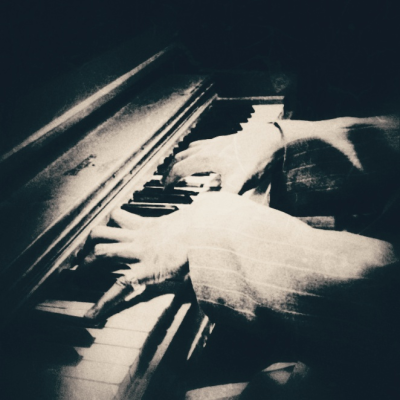
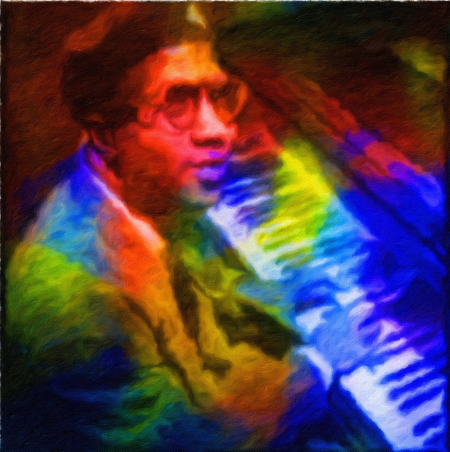
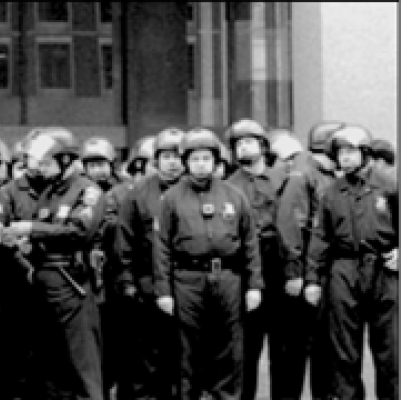
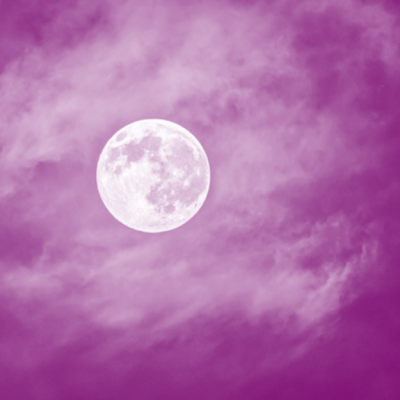



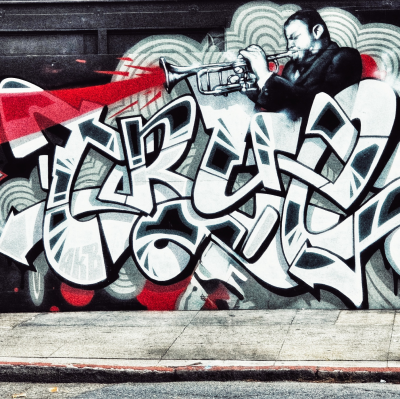




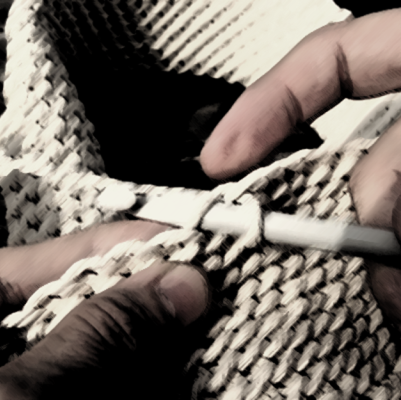
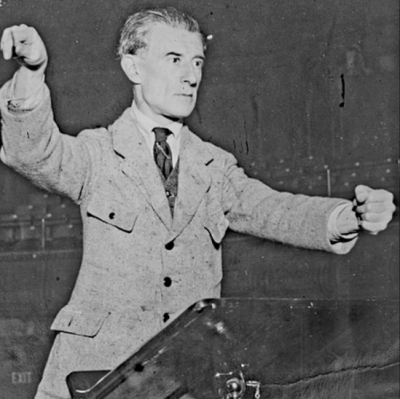






















One of the long traditions in blues writing, particularly bad blues writing, is that white people like to read that black blues music had to do with… white people. Hamilton knows embarrassingly little about the history of blues music. This book is full of simple errors (such as claiming artists from the Delta weren’t from the Delta), distortions, and snide approaches to discussing important hardworking people such as folklorist Howard Odum, without whom we would have roughly _half_ the hard evidence of what blues music sounded like during the ten years before Handy published “Memphis Blues.” Having read this misguided book (sure to please some academics who are more interested in seeing dead white people written about snidely than in music), I know that if I ever become interested in Mae West’s life, I should ignore Hamilton’s book about her.